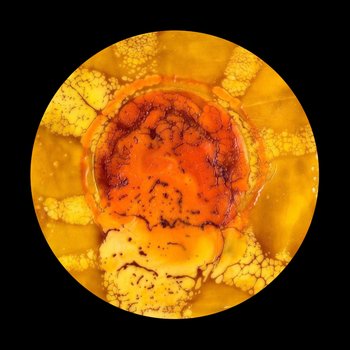Encaustic medium, comprised of beeswax, resin, and pigment, is applied while warm onto porous surfaces, then fused using a torch. Despite its ancient origins, encaustic painting remains relatively unknown to many.
The earliest examples of encaustic painting date back to ancient Egypt, where it was used for portrait panting and funerary portraits. The Fayum mummy portraits, created during the Roman period in Egypt, are famous examples from this era. Encaustic painting was also prominent in ancient Greece, particularly during the Hellenistic period, where it was used for both panel paintings and the decoration of ships.
Most encaustic artists will make their own medium due to cost constraints. I set up temperature-controlled electric pots, add my beeswax and resin, and melt them. Next, the liquid must be filtered with several layers of cheesecloth to remove the bits of tree and insects that were lodged in the resin. Then, the liquid is poured into cupcake pans to cool. Finally, the encaustic “cakes” are ready for use whenever I need one.
While I am painting, I have three pancake griddles warmed to about 200 degrees and metal cups placed on top filled with my encaustic cakes. I add either oil paints or powder pigment to the encaustic medium to create a color palette. The paint brushes should be made of natural animal hair and not plastic, since plastic can melt on the heated surface that keeps the encaustic medium in a liquid state.
Encaustic medium is most often painted on a stiff, porous surface. It should be stiff so that the surface will not move and crack the wax. I typically use wood that I salvage. Using salvaged items is central to my art. I source from local cabinet makers’ dumpsters or local wood workers’ “burn piles,” my backyard wood pile, and once to the Rochester Public Utilities (RPU) facility to see what canvases I could find, such as discarded electrical spindles.
The surface needs to be porous so that the encaustic medium can be fused into it. I use a torch-what’s better than creating art from fire? As layers of wax are applied, each one must be fused into the layer below and cooled before adding more medium.
While the process isn’t simple, it’s well worth the result!
